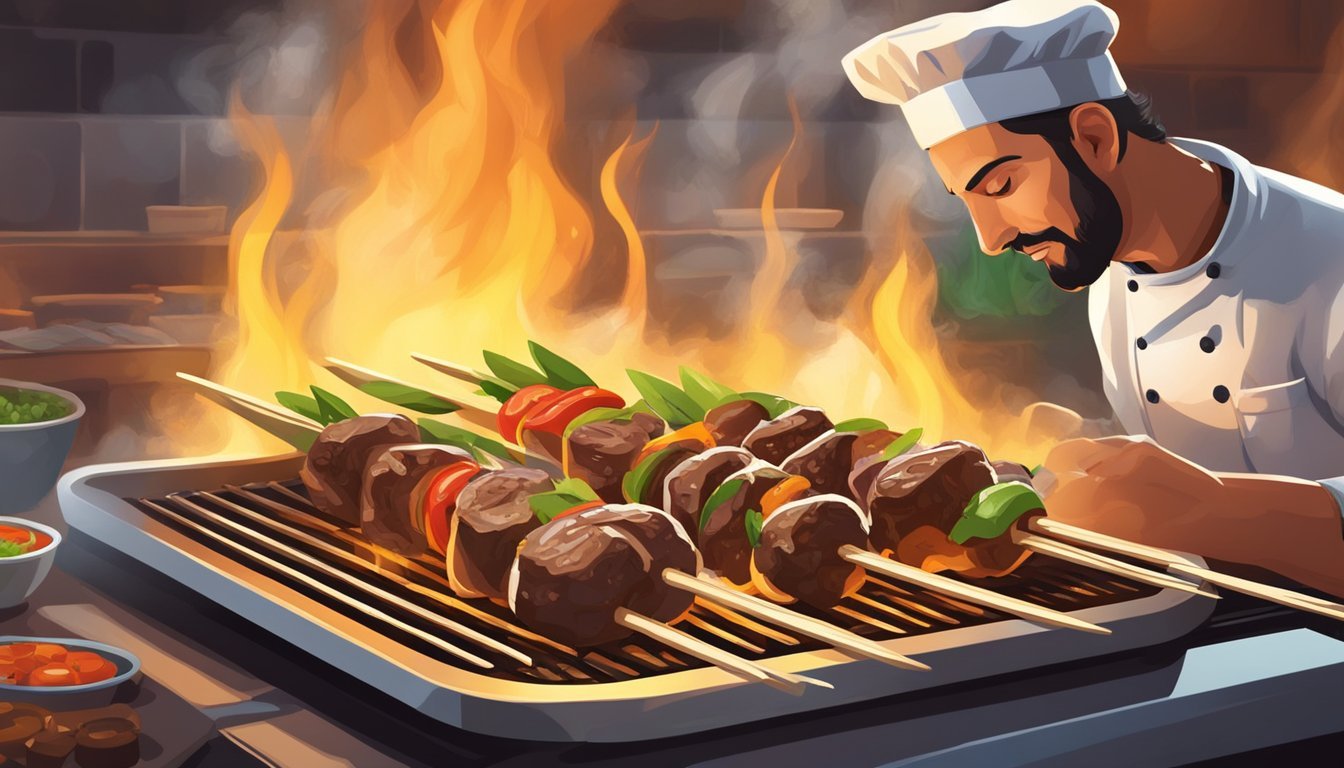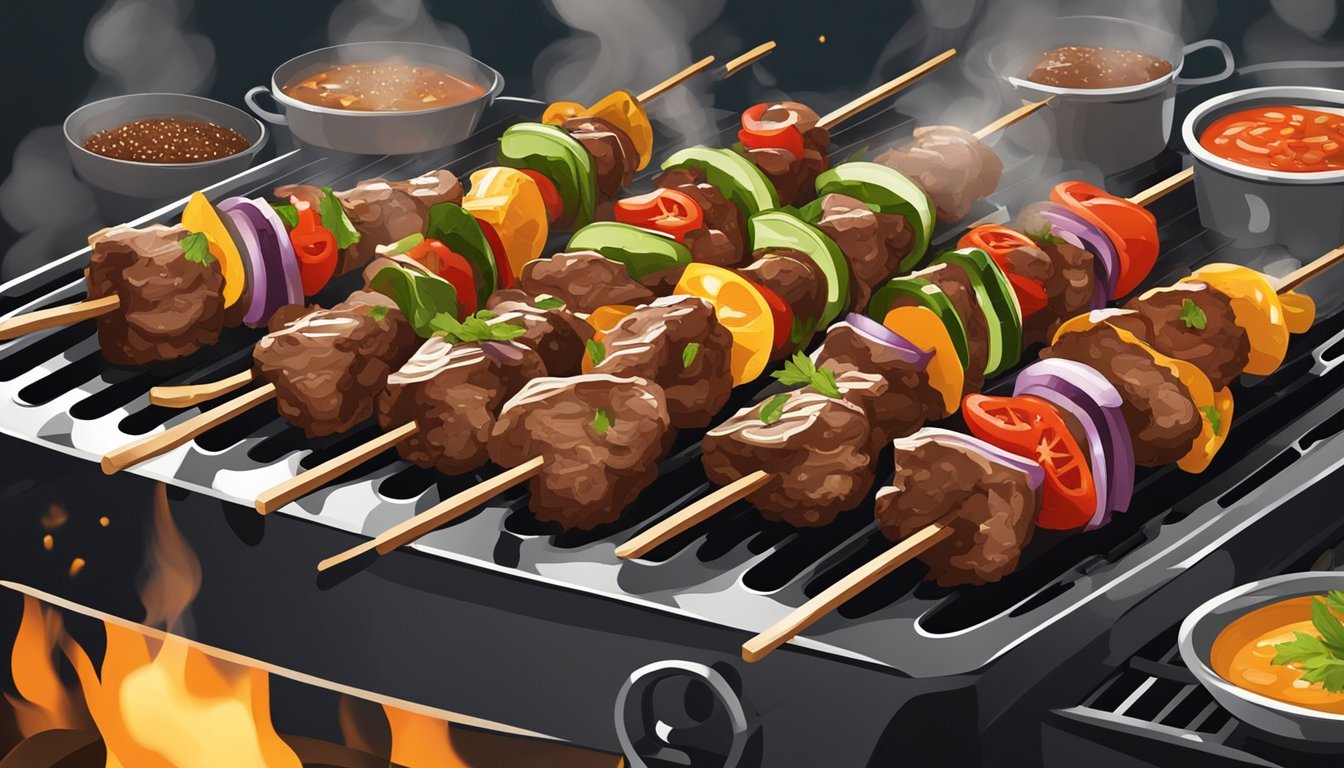Best Way to Reheat Lamb Kebabs
Tips for Retaining Juiciness and Flavor
Reheating lamb kebabs so they remain juicy and flavorful is a culinary challenge many face after enjoying a delicious meal. Lamb, revered for its tenderness and rich flavor, often ends up dry or tough when reheated improperly. To preserve the qualities of the meat, it's crucial to apply methods that maintain its moisture content and enhance the inherent flavors that make lamb kebabs a delightful dish.
Understanding the nature of cooked lamb is key to reheating it successfully. The fibers in the meat have already contracted and released some of their juices during the initial cooking process. Therefore, the reheating method must not further deplete these juices. Techniques that incorporate gentle heat and retain moisture are best suited for this task. They ensure that the succulent texture and robust flavors of the lamb kebabs are as close as possible to their original state.
Understanding the Basics of Lamb Reheating
When reheating lamb kebabs, ensuring the meat reaches a safe internal temperature without drying out is crucial. This section outlines essential practices for maintaining safety, controlling temperature, and retaining moisture for flavorful reheated lamb.
Reheating Safety and Best Practices
To prevent bacterial growth, lamb must be heated to an internal temperature of at least 165°F (74°C). One should use a meat thermometer to check this. The meat should be promptly refrigerated after cooking and consumed within a reasonable time frame to minimize the risk of bacterial contamination.
Storage: Refrigerate lamb kebabs within two hours of cooking.
Thawing: Thaw frozen lamb in the refrigerator and not at room temperature.
Reheating: Only reheat once to avoid quality loss and food safety issues.
Importance of Temperature Control
Temperature control is vital for even heating and preserving lamb's delicate flavors. The oven is preferred for its consistent heat distribution.
Oven: Preheat to a low temperature, generally between 250°F and 300°F.
Microwave: Short intervals on medium power, check frequently to avoid overheating.
Skillet: Medium heat, with added moisture, is effective for quick reheating.
Moisture Retention Techniques
Maintaining moisture is key to keeping reheated lamb kebabs juicy and flavorful. Incorporate liquids like stocks or plan for a covered cooking environment to ensure heat circulates around the meat without drying it out.
Covering: Use foil or a lid to trap steam and moisture.
Liquids: Add a small amount of stock or water to the dish to provide additional moisture.
Resting: Allow the lamb to rest for a few minutes after reheating to redistribute the juices.
Preparing Lamb for Reheating
Proper preparation of leftover lamb ensures both safety and quality when it comes to serving it next time. Paying attention to storage and thawing methods is key for a delicious reheated meal.
Storing Leftover Lamb
Leftover lamb should be stored safely to maintain its freshness and to prevent bacterial growth. One should place the lamb in an airtight container or wrap it tightly in aluminum foil or plastic wrap. It's essential to store the lamb in the refrigeration unit if it is to be eaten within a few days. For longer storage, one should freeze the lamb:
Refrigerator (up to 3 days):
Temperature: Below 40°F (4°C)
Container: Airtight to prevent odor absorption and moisture loss
Freezer (up to 3 months):
Temperature: 0°F (-18°C) or below
Wrapping: Air-tight, heavy-duty foil, freezer wrap, or a freezer-safe container
Thawing Frozen Lamb Correctly
To enjoy tender and flavorful reheated lamb kebabs, it's crucial to thaw them properly. Thawing should always be done in the refrigerator or using a cold water bath, never at room temperature. For refrigerator thawing, it may take up to 24 hours for the lamb to fully defrost. If in a hurry, one could use the cold water method:
Place the lamb in a leak-proof plastic bag.
Submerge it in cold water, changing the water every 30 minutes.
Continue until thawed, which may take a couple of hours depending on the size of the lamb portions.
Once thawed, the lamb should be reheated and consumed promptly, and any leftovers should be thrown away. It's important not to refreeze previously frozen and thawed lamb to preserve its quality and safety.
Conventional Reheating Methods
Reheating lamb kebabs properly is crucial for maintaining their juiciness and flavor. The following conventional methods—oven reheating, stovetop reheating, and microwave reheating—each offer different advantages regarding evenness, speed, and convenience.
Oven Reheating for Evenness
The oven is ideal for those prioritizing even heat distribution which is essential for reheating lamb kebabs thoroughly without overcooking. One starts by preheating the oven to 350°F. Placing the lamb kebabs in a single layer in a casserole dish, they then cover them loosely with aluminum foil to retain moisture. Reheat for about 10-15 minutes, checking periodically to ensure they do not dry out.
Stovetop Reheating for Speed
Using the stovetop ensures quick reheating with immediate temperature control. A skillet should be warmed on medium heat with a small amount of oil. Once hot, the lamb kebabs can be placed in the pan. They should be turned frequently to prevent burning and reheated for a few minutes until adequately warmed through.
Microwave Reheating for Convenience
For reheating lamb kebabs quickly and with minimal fuss, the microwave is a convenient option. One should arrange the kebabs in a microwave-safe dish, adding a few tablespoons of water or stock to aid moisture. Covering with a damp paper towel helps to ensure the meat doesn't dry out. Heat on medium power in 30-second intervals, checking the temperature after each interval until the kebabs are evenly heated.
Alternative Reheating Techniques
When aiming to reheat lamb kebabs while preserving their juiciness and flavor, one must consider methods beyond the usual microwave or oven reheating. Techniques such as sous vide, air frying, steaming, and grilling each offer unique benefits that can enhance the texture and taste of the meat.
Sous Vide for Maximum Tenderness
The sous vide method involves placing the lamb kebabs in a vacuum-seal bag and submerging them into a water bath at a precise temperature. A sous vide machine circulates the water, ensuring even heating. This technique gently reheats the kebabs without drying them out, resulting in maximum tenderness.
Air Fryer for Crispiness
An air fryer is an effective tool for regaining the crispiness of the kebabs' exterior while keeping the inside moist. To do this, one should:
Preheat the air fryer to 300°F (150°C).
Flash-fry the kebabs for a few minutes, checking frequently to avoid overcooking.
Steaming to Preserve Moisture
Steaming is a gentle reheating method that helps to preserve the moisture within the kebabs. Utilize a steamer basket over boiling water and cover to create a moist environment, ensuring the kebabs do not dry out while reheating.
Grill Reheating for Smoky Flavor
Reheating lamb kebabs on a grill can impart a delightful smoky flavor reminiscent of their original cooking method. To prevent drying, one could:
Preheat the grill to a medium-low heat.
Place the kebabs on the grill, turning them occasionally for even heating.
Enhancing Flavor and Texture
When reheating lamb kebabs, one shouldn't merely focus on temperature, but also on how to enhance their flavor and texture. The use of oils and seasonings, serving with appropriate sauces, and pairing with the right side dishes can elevate the eating experience significantly.
Using Oils and Seasonings
To maintain the juicy and delicious flavor of lamb kebabs while reheating, one can apply a thin layer of oil or melted butter to the surface. Olive oil is commonly recommended due to its high smoke point and the rich flavor it imparts. For seasoning, a pinch of salt and pepper or a blend of Mediterranean spices can be added before reheating to refresh the kebabs' aromatic qualities.
Recommended Oils and Seasonings:
Oils: Olive oil, canola oil, or any high smoke point oil
Seasonings: Salt, pepper, cumin, coriander, or a custom spice blend tailored for lamb
Serving with Complementary Sauces
A well-chosen sauce can work wonders in restoring the moisture and enhancing the taste of reheated lamb kebabs. A spoonful of warm gravy or cooking juices drizzled over the kebabs after reheating can reintroduce moisture and add depth to the flavor profile. Moreover, a dollop of refreshing mint sauce on the side could provide a cool counterbalance to the hearty taste of lamb.
Sauces for Lamb Kebabs:
Warm gravy or cooking juices
Mint sauce
Yogurt-based dips
Pairing with Side Dishes
Choosing the right side dishes can complement and contrast the seasoned, rich flavors of lamb kebabs. Side dishes contribute not only to the meal's taste but also to the overall texture. Options like roasted vegetables or a crisp garden salad not only provide a nutritious component but also a textural contrast that makes each bite more interesting.
Texture-Contrasting Side Dishes:
Soft and Warm: Roasted vegetables, pilaf rice
Crisp and Refreshing: Garden salad, tabbouleh
Expert Tips and Final Thoughts
This section gathers expertise on how to optimally reheat lamb kebabs while ensuring they remain juicy and flavorful, and offers savvy suggestions for repurposing leftover roast lamb.
Avoiding Common Mistakes
When reheating lamb kebabs, controlling the heat is crucial to prevent overcooking. Medium heat is optimal, allowing the lamb to warm through without toughening. It’s essential to heat in short bursts, stirring or turning the meat to promote even warmth. Moisture loss can lead to dry, unappetizing meat; hence, adding a bit of water or stock to the pan can create steam, keeping the lamb succulent.
For those wondering if it's safe to reheat lamb multiple times, the answer is to aim for a single reheat. Each reheating cycle increases the risk of drying out the meat and can potentially lead to food safety issues if not done correctly.
Creative Ideas for Leftover Lamb
Leftover roast lamb is versatile and can be transformed into a variety of new dishes. Slicing the roast into thin slices can make it suitable for salads or sandwiches the next day. Alternatively, one could dice the lamb and simmer it in a spiced sauce to create a hearty lamb curry.
When repurposing leftover lamb, it is important to consider portion size to ensure even reheating. Leftovers should be stored promptly and reheated only once to maintain quality and safety.
By following these tips and exploring creative culinary paths, one can make the most out of their leftover lamb while ensuring a delicious experience with every dish.




